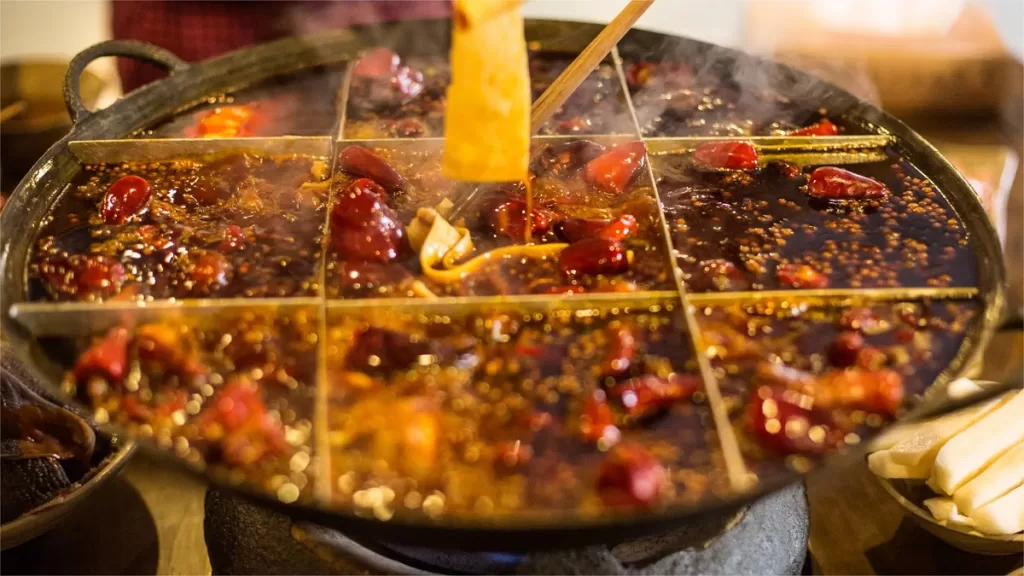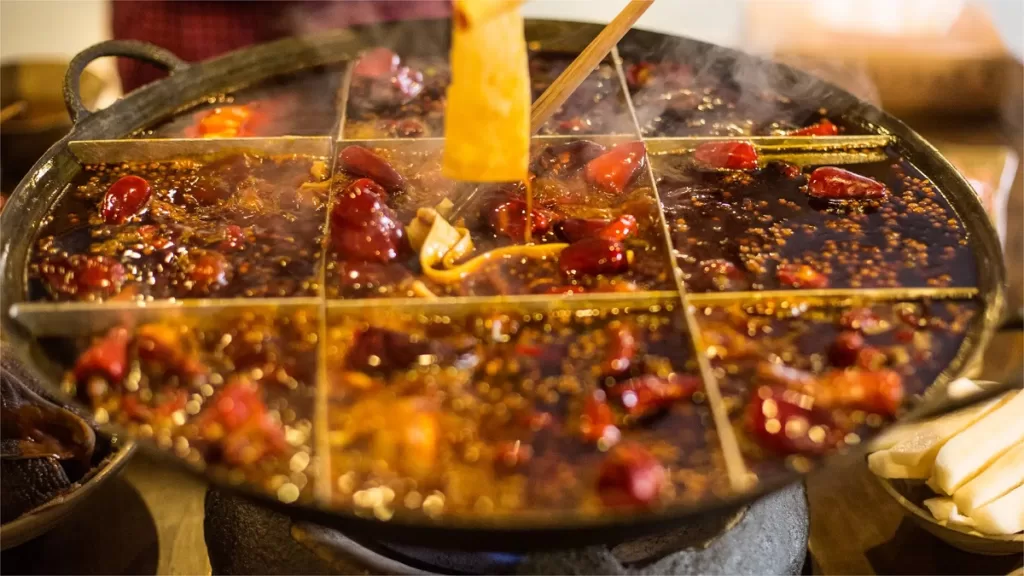Chongqing Hotpot (Hotpot épicé et anesthésiant)


Chongqing hotpot (重庆火锅), also known as Mao Du hotpot or Spicy and Numbing hotpot, is a signature cuisine within the Sichuan culinary tradition, one of the four major Chinese culinary styles. Renowned for its bold flavors characterized by spiciness, numbness, saltiness, freshness, fragrance, and crispiness, Chongqing hotpot represents a quintessential element of Chinese gastronomy. Its origins can be traced back to the late Ming and early Qing dynasties along the banks of the Jialing River in Chongqing, particularly in areas like Chaotianmen, where the dining style was casual and hearty.
The key ingredients of Chongqing hotpot include beef omasum (or tripe), pig’s throat, duck intestines, and a spicy broth known as “niu xue wang” (beef blood broth). These ingredients, when combined with the distinctive flavors of Chongqing hotpot, create a culinary experience that is both diverse and uniquely flavorful.
The exact origin of Chongqing hotpot is shrouded in different legends, with various stories providing insight into its emergence. One theory, known as the “ship workers’ account,” suggests that boatmen traveling along the Yangtze River developed the cooking method to dispel dampness and coldness. Given the rudimentary conditions for preparing meals on boats, they used a simple clay pot to boil a broth containing various vegetables and affordable offal, enhanced with the addition of Sichuan peppercorns and chili peppers. This dining tradition persisted and evolved over time.
Another theory, the “commotion in the Dragon Palace,” speaks of restaurants mixing leftover ingredients and selling the concoction to the poor in places like docks and slums. The “slaughtering house street” origin theory refers to the sole cattle slaughtering facility in the main urban area of Chongqing during the Qing Dynasty, located near Nanji Gate close to the bridgehead of the Yangtze River Bridge. It is believed that the delectable taste of washed and boiled offal from this region contributed to the creation of Mao Du hotpot.
Regardless of the specific origin, it is widely accepted that Chongqing hotpot originated in waterfront and dock areas. The culinary habits of the local population, with a historical inclination towards appreciating bold and flavorful dishes seasoned with chili and Sichuan peppercorns, played a pivotal role in shaping Chongqing hotpot into what it is today.
Chongqing hotpot quickly gained popularity and spread across the nation as the winds of reform swept through China. From the remote hinterlands of Golmud in the northwest to the international metropolis of Shanghai on the eastern coast, and from the ice city of Harbin in the north to the capital of Hainan, Haikou, Chongqing hotpot establishments proliferated. The unique and irresistible taste of Chongqing hotpot has made it a culinary sensation, capturing the hearts and taste buds of people throughout China. It has become a symbol of Chongqing’s culinary culture, demonstrating its rich history and deep connection with the local people. The allure of Chongqing hotpot knows no bounds, spreading its charm far and wide across the vast expanse of the country.